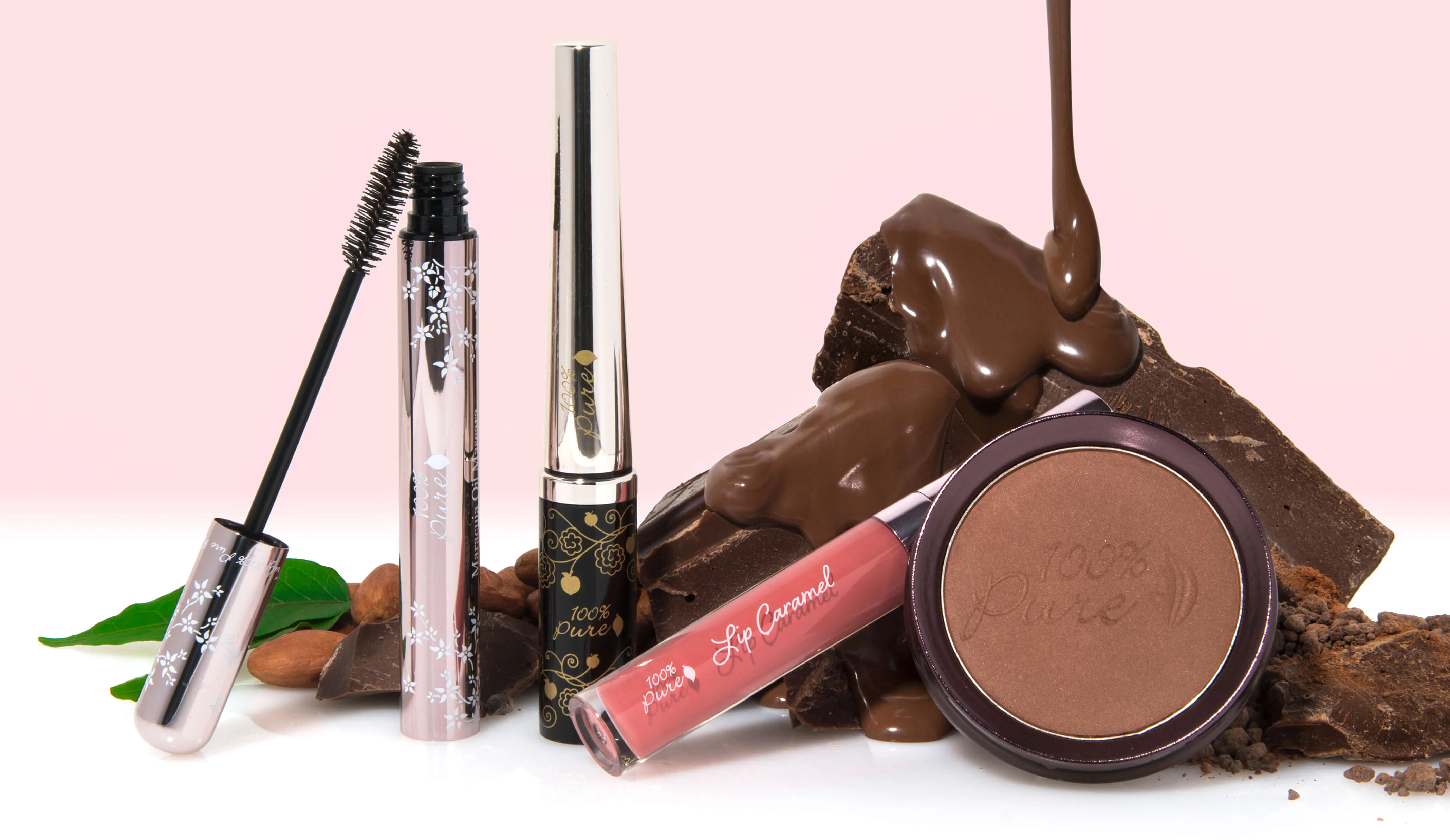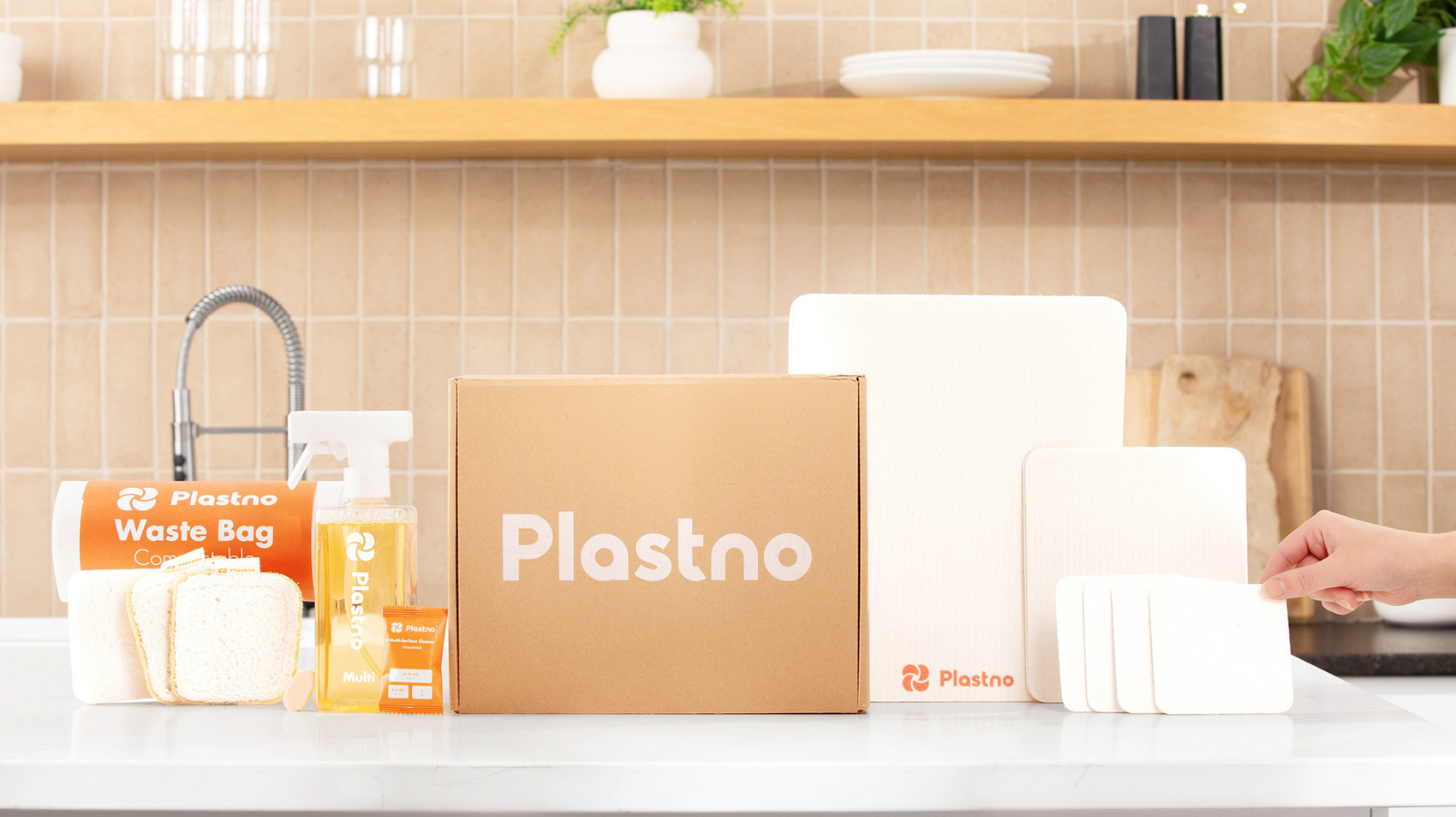Our Top Picks
Green Hive is reader-supported. When you purchase through links on our site, we may earn an affiliate commission. To understand our thorough approach to rating brands and products, explore our comprehensive methodology.
Our Top Picks
Green Hive is reader-supported. When you purchase through links on our site, we may earn an affiliate commission. To understand our thorough approach to rating brands and products, explore our comprehensive methodology.
Key takeaways
- Traditional leather causes deforestation and generates loads of waste
- Vegan leather comes from synthetic and plant-based materials
- Leather can now be grown in labs
Introduction
Move over, animal leather — there's a new rebel in town! Vegan leather, the bold and eco-conscious alternative, is rewriting the rules of fashion with its innovative style and guilt-free charm. Unlike traditional leather, which raises ethical and environmental concerns due to its animal-derived origin, vegan leather offers a refreshing and guilt-free solution that's rapidly gaining popularity.
But, beyond its reputation for being kind to animals, vegan leather boasts a diverse range of materials and production methods that challenge conventional norms. So, what is vegan leather made of? This article answers this question and more.
The challenges of traditional animal leather
Traditional animal leather, while widely used and appreciated for its durability and luxurious feel, poses several significant challenges that have led to a growing demand for sustainable alternatives like vegan leather. Some of the key challenges of traditional animal leather include:
Environmental impact
The production of animal leather involves several environmentally harmful processes. The tanning process, in particular, requires the use of toxic chemicals, such as chromium and other heavy metals, which can lead to water pollution and soil contamination if not properly managed.

For example, tanneries in the Hazaribagh neighbourhood of Dhaka, Bangladesh, pump 5.8 million gallons of highly toxic untreated effluent into open canals daily Additionally, the large-scale livestock farming required to meet the demand for leather contributes to deforestation, greenhouse gas emissions, and the depletion of natural resources.
Animal welfare
The leather industry is intrinsically linked to the meat industry, as it largely relies on animal by-products. This raises ethical concerns about the treatment and welfare of animals raised for leather production.

Practices such as factory farming, cramped living conditions, and inhumane slaughtering methods are common in the meat and leather industries, which can be distressing for animal rights advocates.
Land use and resource intensity
Raising livestock for leather requires vast amounts of land, water, and food resources. This places significant pressure on ecosystems and contributes to habitat loss and biodiversity decline. As the global demand for leather increases, so does the strain on natural resources, exacerbating the environmental impact.
Waste generation
Leather production generates substantial amounts of waste. This waste includes trimmings, fleshings, and splits, and it is often discarded in landfills. Out of 1000 kg of raw hide, nearly 730 kg is generated as a solid waste in leather processing. Thus, only 270 kg of theraw material is converted into a usable product. This waste can contribute to the production of methane, a greenhouse gas that is more potent than carbon dioxide.

Considering these challenges, the fashion industry and consumers alike are increasingly exploring sustainable alternatives like vegan leather, which offer a promising solution to address environmental and ethical concerns while still maintaining style and quality.
What is vegan leather made of?
The growth of sustainable fashion has birthed more interest in alternative means of sourcing leather devoid of animal skins and the attendant problems that come with traditional leather. As consumers become increasingly conscious of their choices, the demand for ethical and environmentally friendly products has surged, leading to a flourishing market for innovative materials like vegan leather.

How can leather be vegan? Is vegan leather durable? Is vegan leather plastic? These are some common questions that typically arise in converaations about vegan leather. This section answers these questions and more.
Vegan leather is a broad term that refers to a wide range of synthetic or plant-based materials used as a substitute for traditional animal skin. This innovative and ethical alternative to animal-derived leather has gained significant popularity in recent years, driven by the increasing demand for sustainable and cruelty-free fashion options.
Unlike animal leather, which involves the use of animal skins and hides, vegan leather is entirely free from animal products, making it a more compassionate choice for those who advocate for animal rights. Manufacturers create vegan leather using various materials such as polyurethane (PU), polyvinyl chloride (PVC), plant fibers (e.g., pineapple leaves, mushroom mycelium), and even recycled materials. The result is a diverse array of textures and appearances that mimic the look and feel of real leather, without any harm to animals or the environment.
Types of vegan leather
If you’re in the market for vegan leather, you are spoilt for options. Your next jacket might be a vegan leather jacket. Vegan leather comes in different types, and each type has its unique properties. They include polyurethane (PU) leather, polyvinyl chloride (PVC) leather, plant-based leather, and lab-grown leather.

Polyurethane leather
Polyurethane leather, often abbreviated as PU leather, is a popular type of vegan leather widely used as a synthetic alternative to traditional leather. It is a versatile and cost-effective material that offers several advantages, making it a preferred choice in the fashion and upholstery industries.
PU leather is made by applying a polyurethane coating to a fabric backing, typically made from polyester or cotton. The polyurethane coating gives the material a leather-like appearance, texture, and feel. It can be manufactured to mimic the natural grain patterns found in animal leather, providing a realistic and sophisticated look. Polyurethane leather is known to be water-resistant, breathable, and easy to clean. However, it tends to smell like plastic and is not as breathable as real leather derived from animal skin.
Polyurethane leather, although more sustainable than PVC, still has environmental implications due to its petroleum-based production. It can also lack the durability and long-lasting nature of genuine leather, often showing signs of wear and tear more quickly.
Polyvinyl chloride leather
Polyvinyl chloride leather, commonly known as PVC leather, is another type of synthetic leather used as an alternative to traditional animal leather. Like polyurethane leather, PVC leather is a form of vegan leather that is cruelty-free and does not involve the use of animal products in its production.
PVC leather is made by applying a layer of PVC to a base material, such as polyester or cotton. The PVC is then cured at high temperatures, which hardens the PVC and makes it more durable. PVC leather can be dyed in a variety of colors, making it a versatile material for fashion accessories.
PVC leather can sometimes release harmful chemicals, such as dioxins and phthalates. These chemicals have been linked to health problems, such as cancer and reproductive problems. PVC leather is also less breathable than natural leather, which may lead to discomfort in hot or humid conditions.
Plant-based leather
Plant-based leather, also known as bio-leather or vegetable leather, is a type of vegan leather made entirely from plant-derived materials. Unlike traditional animal leather, which uses animal hides and skins, plant-based leather offers a more sustainable and ethical alternative, as it does not involve the exploitation of animals.

There are several innovative materials used in the production of plant-based leather, each with its unique characteristics:
Piñatex: Derived from pineapple leaves, Piñatex is a natural and sustainable material that has gained popularity in recent years. The production process involves extracting fibers from pineapple leaves, which are then processed into a non-woven textile. Piñatex offers a unique texture, durability, and breathability, making it suitable for various fashion and accessory items.
Mushroom leather: Also known as mycelium leather, mushroom leather is a sustainable vegan leather created using mushroom mycelium, the root system of mushrooms. This renewable material can be grown and molded into various shapes, offering a biodegradable and compostable alternative to traditional leather.
Apple leather: Made from apple peel waste, apple leather is a by-product of the apple juice and cider industry. The discarded apple peels are processed into a leather-like material, providing a sustainable and biodegradable option for various fashion and interior applications.
Cork leather: Cork leather is made from the bark of cork oak trees, which is harvested without harming the tree. The material is lightweight, water-resistant, and has natural antibacterial properties, making it suitable for bags, shoes, and other accessories.
Plant-based leather is often praised for its reduced environmental impact compared to traditional leather, as it does not require large-scale livestock farming and the associated deforestation and greenhouse gas emissions. Additionally, some plant-based leather materials, like mushroom leather, are biodegradable, offering a more circular approach to fashion and reducing waste.
Lab-grown leather
Lab-grown leather, also known as cultured or biofabricated leather, is a revolutionary and sustainable approach to creating leather without the need for traditional animal husbandry. This means we can now manufacture vegan leather in the lab. Unlike traditional leather, which comes from animal hides and skins, lab-grown leather is produced through biotechnology and tissue engineering techniques, making it an animal-friendly and environmentally conscious alternative.

Lab-grown leather significantly reduces the environmental impact associated with traditional leather production, including deforestation, water usage, and greenhouse gas emissions from livestock farming. In addition no animals are harmed in the production of lab-grown leather, making it a great alternative for sustainable fashion.
Although lab-grown leather is still in its early stages of commercialization, it holds great promise as a sustainable and ethical solution for the fashion industry. As technology advances and scalability improves, lab-grown leather has the potential to revolutionize the way leather products are made, offering consumers a guilt-free and planet-friendly choice for their fashion preferences.
FAQs
Is vegan leather ethical?
Vegan leather is generally considered more ethical than traditional animal leather based on the fact that it is cruelty-free and environmentally friendly. However, the ethicality of vegan leather depends on the specific type of vegan leather and how it is produced. Some types of vegan leather, such as cork leather and apple leather, are considered to be more ethical than others, such as PVC leather.
Is vegan leather really just plastic?
Vegan leather is not necessarily "just plastic," but it can be made from various synthetic materials, some of which include plastic components. The term "vegan leather" is a broad category that encompasses any type of artificial or synthetic leather that does not involve animal-derived materials.
Is vegan leather as good as real leather?
Vegan leather can be a suitable alternative to real leather for many consumers, considering its ethical advantages and lower environmental impact in the manufacturing process. However, real vegetable-tanned leather is known for its unique appearance, durability, and natural charm, making it preferred by some individuals who prioritize these qualities.

The choice between vegan and real leather depends on individual values and preferences.
Is vegan leather the same as faux leather?
Yes, vegan leather and faux leather are essentially the same thing. Both terms refer to a type of leather that is made without using animal-derived materials. Vegan leather and faux leather are manufactured using various synthetic or plant-based materials, such as polyurethane (PU), polyvinyl chloride (PVC), plant fibers (e.g., pineapple leaves, mushroom mycelium), and recycled materials.
Is vegan leather biodegradable?
The biodegradability of vegan leather varies depending on the specific material used. Some plant-based and natural fiber-based vegan leathers, such asmushroom leather, can be biodegradable. However, plastic-free vegan leather made from materials like polyurethane (PU) or polyvinyl chloride (PVC) is not biodegradable. Therefore, the sustainability and biodegradability of alternative leather depend on the materials chosen in its manufacture.
Conclusions
Vegan leather has become a staple in the fashion industry. You can easily find vegan leather shoes, handbags and other accessories today. The demand for vegan leather products is on a steady rise as data shows that the global vegan leather Market is valued at USD 39.5 Billion in 2022 and is projected to reach a value of USD 74.5 billion by 2030 at a compound annual growth rate of 9.5%. Its versatility and eco-friendly nature have made it a favorite among environmentally conscious consumers and ethical fashion enthusiasts. This means brands using or producing vegan leather can expect to tap into a thriving market of environmentally conscious consumers.
It is important to note that the term "vegan leather" does not automatically mean sustainable leather because not all vegan leather is sourced from sustainable sources. While vegan leather is free from animal-derived materials and offers an ethical alternative to traditional leather, its environmental impact can still vary significantly based on the materials and manufacturing processes used.
Some vegan leather products are made from synthetic materials, such as polyurethane (PU) or polyvinyl chloride (PVC), which can have negative environmental consequences if not produced and disposed of responsibly. The manufacturing of these synthetic materials may involve the use of non-renewable resources, chemicals, and energy-intensive processes, contributing to pollution and waste.
On the other hand, some vegan leather options are sourced from more sustainable and eco-friendly materials, such as plant-based alternatives like mushroom mycelium. These materials are renewable and biodegradable, offering a more environmentally friendly option compared to certain synthetic vegan leathers.
Butler, R. A. (2021, November 22). Deforestation in the Amazon. Mongabay. https://rainforests.mongabay.com/amazon/amazon_destruction.html
Fela, K., Wieczorek-Ciurowa, K., Konopka, M., & Woźny, Z. (2011). Present and prospective leather industry waste disposal. Polish Journal of Chemical Technology, 13(3), 53–55. https://doi.org/10.2478/v10026-011-0037-2
Price, D. M. (2019). Our Lust for Leather Comes at a High Price in the Developing World. Undark Magazine. https://undark.org/2017/02/21/leather-tanning-bangladesh-india/
Reporter, G. S. (2020, September 23). Don’t hide from the truth. The Guardian. https://www.theguardian.com/lifeandstyle/2008/aug/27/ethicalfashion.leather
Vantage Market Research,https://www.vantagemarketresearch.com/. (n.d.). Vegan Leather Market Size USD 74.5 Billion by 2030. Vantage Market Research. https://www.vantagemarketresearch.com/industry-report/vegan-leather-market-2052
Wang, Y., & Qian, H. (2021). Phthalates and Their Impacts on Human Health. Healthcare, 9(5), 603. https://doi.org/10.3390/healthcare9050603

.png)




.png)
.png)



.svg)
